Evolutionary Ecology
The department of Evolutionary Ecology gathers complementary skills in behavioural ecology, population dynamics, population biology, community ecology, and methodology (statistics and modelling). The research done in the department aims at studying how animal species evolve in a changing world by understanding the causes of the evolution of traits, adaptations and interactions. For that, we consider different levels of organization from individuals to populations and communities. Because organisms cannot be considered isolated from other biotic factors, we consider pathogens but also competing species within communities.
We study how individuals adapt to their environments that are largely impacted by anthropic pressures, and how life history traits and behaviour evolve in response to these pressures. Although we mainly focus on phenotype, we more and more consider the mechanistic link between the genotype and the phenotype. We develop the theoretical framework of our discipline through a conceptual and modeling approach. In parallel, we test hypotheses that arise from theoretical predictions through experimental, comparative and observational approaches on different biological models (insects, birds, mammals). Experimental approaches are developed in the laboratory (insect model) and in natura (bird, insect and mammal models). Observational and comparative research is mainly concerned with vertebrates. Our approaches are also, and increasingly, interested in the mechanisms of adaptive responses. In addition to the classical approaches of demographic analysis and trait change, methods of ecophysiology, chemical ecology and molecular biology are used.
Our department hosts several long-term studies of wild populations of different species. These long-term studies offer a valuable way to understand how biotic and abiotic factors affect individuals’ life history traits, and the functioning of populations in natura. Five populations of mammalian species are thus monitored for several years (more than 40 years on roe deer, 30 on Alpine marmots, 25 years on cats, 16 years on zebras, and 20 years on impala). Two of our study sites (La Sassière in Vanoise National Park (Alpine marmots) and Hwange National Park) have been certified as “Site d’Etude en Ecologie Globale” (SEEG), and two (ZA “Hwange” and ZA “Antarctic and sub-Antarctic”) were certified as “Zone Atelier” by the CNRS.
The department of Evolutionary ecology is also largely involved in training activities. Lastly, we also have strong socio-economic relationships. Indeed, because we address questions of major societal interest (global warming, public health) we tightly collaborate with socio-economic partners (Office Français de la Biodiversité, Vanoise National Park, Hwange National Park in Zimbabwe, Office National des Forêts, etc.) and participate to general public and media events.
Publications
Display of 721 to 750 publications on 2449 in total
Deterministic processes drive functional and phylogenetic temporal changes of woody species in temperate forests in Northeast China
Annals of Forest Science . 76 ( 2 ) : 42
Journal article
see the publicationPhylogenetic diversity in the Western Ghats biodiversity hotspot reflects environmental filtering and past niche diversification of trees
Journal of Biogeography . 46 ( 1 ) : 145-157
DOI: 10.1111/jbi.13464
Journal article
see the publicationWhat makes a weed a weed? A large-scale evaluation of arable weeds through a functional lens
American Journal of Botany . 106 ( 1 ) : 90-100
DOI: 10.1002/ajb2.1213
Journal article
see the publicationAvis de l'Anses relatif à l'évaluation des mesures de prévention et de gestion concernant les activités en forêt et des mesures de biosécurité en élevages porcins afin de prévenir et maîtriser le risque de diffusion de la Peste Porcine Africaine
: 24 p.
Report
see the publicationAvis de l’Anses relatif à l'évaluation des mesures de gestion à mettre en place en cas de découverte d’un cas de peste porcine africaine dans la faune sauvage dans les différentes zones réglementées françaises
: 17 p.
Report
see the publicationAvis de l'Anses relatif à l'évaluation de l'impact des activités en forêt sur le risque de diffusion de la Peste Porcine Africaine sur le territoire national, par le dérangement des sangliers. Deuxième partie (activités humaines de loisir et d'expl
: 29 p.
Report
see the publicationAvis de l’Anses relatif à la Réévaluation des mesures de prévention et de gestion mises en place afin de prévenir et maîtriser le risque de diffusion de la PPA vers le territoire national
: 13 p.
Report
see the publicationIsolement et caractérisation de bactéries du genre aeromonas en élevages de poissons d’étangs situes en Pays de Loire
6. Journées de la Recherche Filière Piscicole . ( 6ème ed. ) : 86 p.
Poster
see the publicationAvis de l’Anses relatif à l’évaluation de l'impact des activités en forêt sur les risques d’introduction et de diffusion de la Peste Porcine Africaine sur le territoire national . Première partie
: 27 p.
Report
see the publicationÉvaluation de l’impact des activités humaines d’exploitation forestière et de loisir sur le risque de propagation du virus de la peste porcine africaine : première élicitation d’experts
Epidémiologie et Santé Animale . 76 : 67-75
Journal article
see the publicationPrévalence des pathogènes portés par les tiques chez les ongulés de montagne dans 4 régions de France
37ème rencontres du GEEFSM .
Conference paper
see the publicationImmune senescence in two populations of a wild mammal, the roe deer
Annual Meeting ECOFECT .
Conference paper
see the publicationMaladies vectorisées par les tiques chez les ongulés sauvages de montagne : revue systématique
37èmes Rencontres du GEEFSM .
Conference paper
see the publicationAssessment of diagnostic tests in the absence of a gold standard: a Bayesian approach simultaneously using latent class and mixture models for the diagnosis of bovine dictyocaulosis
BAYES2019 Lyon: Bayesian Biostatistics .
Conference paper
see the publicationUn cas d’echec de traitement sélectif de la dictyocaulose avec de l’éprinomectine injectable dans un troupeau de vaches laitières
Bulletin des G.T.V. . 94 : 105-114
Journal article
see the publicationPertinence d'un traitement sélectif à l'échelle du groupe lors de dictyocaulose bovine
Journées Nationales des GTV .
Conference paper
see the publicationBon usage du traitement sélectif. Exemple d’échec d’un traitement sélectif de la dictyocaulose avec de l’éprinomectine injectable dans un troupeau de vaches laitières.
Journées Nationales des GTV .
Conference paper
see the publicationEndemic foot and mouth disease: pastoral in-herd disease dynamics in sub-Saharan Africa
Scientific Reports . 9 ( 1 ) : 17349
Journal article
see the publicationAssessing the potential of plains zebra to maintain African horse sickness in the Western Cape Province, South Africa
PLoS ONE . 14 ( 10 ) : e0222366
Journal article
see the publicationFramework for Estimating Indirect Costs in Animal Health Using Time Series Analysis
Frontiers in Veterinary Science . 6
Journal article
see the publicationCharacterizing Livestock Markets, Primary Diseases, and Key Management Practices Along the Livestock Supply Chain in Cameroon
Frontiers in Veterinary Science . 6
Journal article
see the publicationRevisiting the genetic diversity of emerging hantaviruses circulating in Europe using a pan-viral resequencing microarray
Scientific Reports . 9
Journal article
see the publicationMicrobial cross-feeding promotes multiple stable states and species coexistence, but also susceptibility to cheaters
Journal of Theoretical Biology . 465 : 63-77
Journal article
see the publicationTrophy hunting mediates sex‐specific associations between early‐life environmental conditions and adult mortality in bighorn sheep
Journal of Animal Ecology . 88 ( 5 ) : 734-745
Journal article
see the publicationMaternal longevity and offspring sex in wild ungulates
Proceedings of the Royal Society B: Biological Sciences . 286 ( 1896 ) : 20181968
Journal article
see the publicationThe Adaptive Sex in Stressful Environments
Trends in Ecology & Evolution . 34 ( 7 ) : 628--640
Journal article
see the publicationWhich primer set(s) for your bat diet metabarcoding study? Application to two insectivorous bat species sharing maternity roosts
8. European Congress of Mammalogy .
Conference paper
see the publicationPopulation genetics as a tool for conservation biology: defining management units for the greater horseshoe bat
8. European Congress of Mammalogy .
Conference paper
see the publicationDoes host socio-spatial behavior lead to a fine-scale spatial genetic structure in its associated parasites?
Parasite . 26 : 64
Journal article
see the publicationDetection of tick-borne pathogens in questing Ixodes ricinus in the French Pyrenees and first identification of Rickettsia monacensis in France
Parasite . 26 : 20
Journal article
see the publication
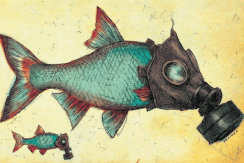
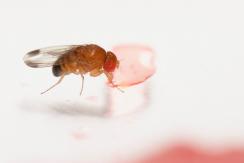
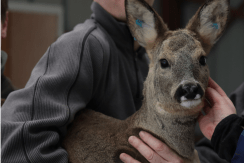
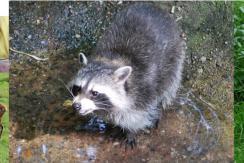
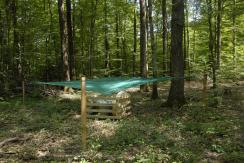
You also, comment on this article